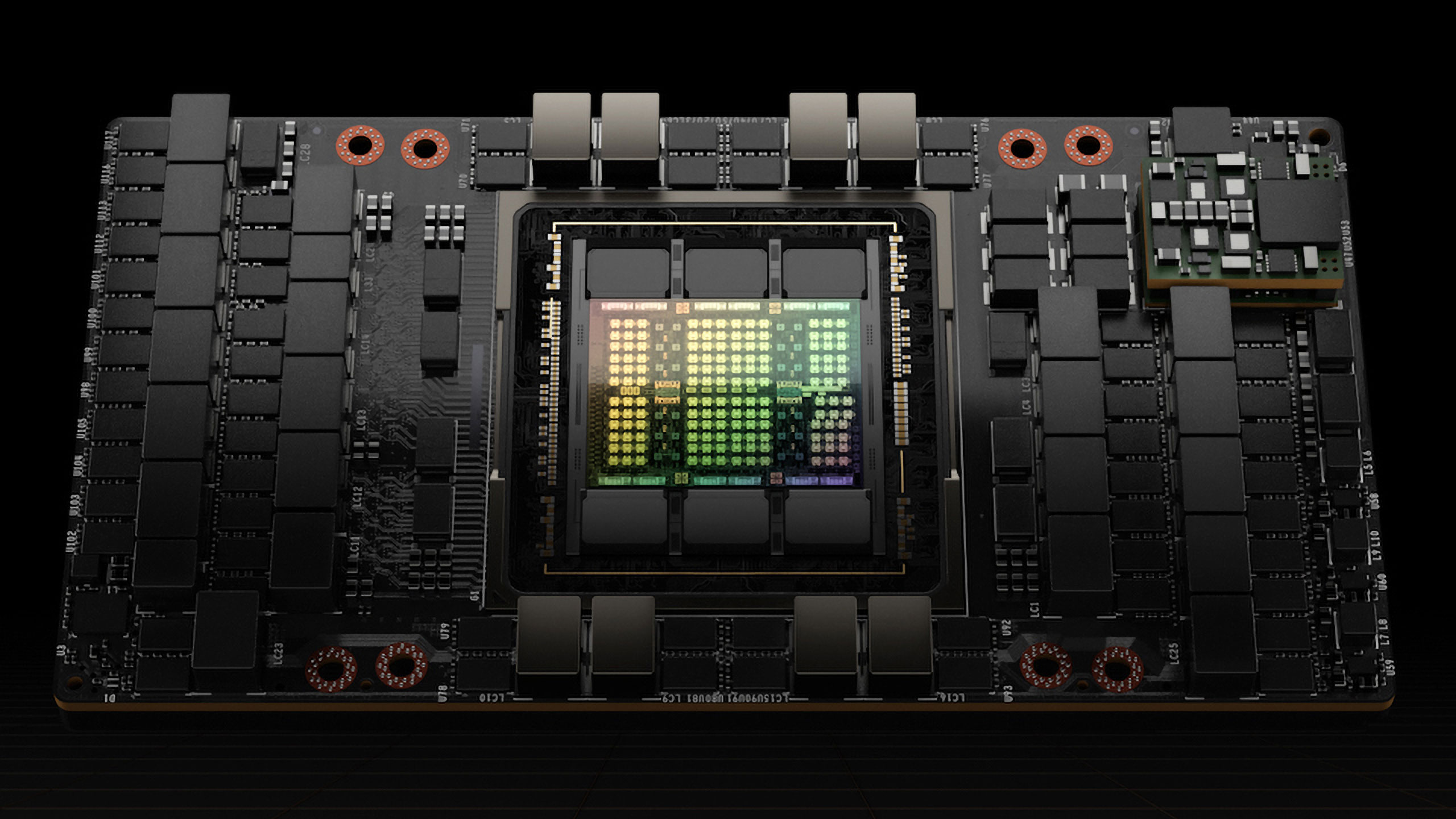Underground China repair shops thrive servicing illicit Nvidia GPUs banned by export restrictions — companies resurrecting banned AI accelerators at a rate of up to '500 per month'

Despite the best efforts of American politicians, there are plenty of restricted Nvidia data center GPUs in China, but because the parts are smuggled in relatively limited quantities, their owners are inclined to repair failed A100 or H100 processors, as they are obviously not covered by any warranties. As such, Reuters reports that there is a booming underground industry focused on servicing high-end Nvidia AI GPUs that are officially restricted from export to the country.
Around a dozen small firms in Shenzhen now reportedly provide repair services for advanced Nvidia GPUs. Two companies confirmed that they primarily handle A100 and H100 units, which can be used to build powerful supercomputers both for AI and HPC, and are restricted from being shipped to Chinese entities. One of them began offering these services in late 2024 and now handles up to 500 GPU repairs per month. These businesses have even set up facilities with server rooms to simulate real-world data center conditions for testing.
Apparently, the profitability of this gray-market repair work has prompted businesses to form dedicated offshoots for handling just AI GPUs. AI accelerators — both add-in cards and SXM modules — are complex devices that can experience several types of breakdowns due to extreme thermal, electrical, and mechanical stresses they endure in data center environments.
Continuous heavy workloads can cause wear-related failures like dry thermal paste, fan issues (in case of some cards), component fatigue on the PCB, and damaged or oxidized connector pins in the SXM interface. More complex problems probably include failure of the power delivery subsystem, solder joint cracks under the massive GPU or HBM packages, or even degradation of the HBM memory. Fatal failures like die cracking (when using liquid cooling) or interposer delamination are relatively rare and unrepairable, but many of the aforementioned issues can be fixed.
Reuters reports that repair workshops in Shenzhen usually replace fans (which suggests that they service A100 and H100 cards) and can diagnose memory or PCB failures (which applies to both cards and SXM modules). They can probably also replace passive components like capacitors, inductors, resistors, or MOSFETs, fix damaged pins, and resolder GPU packages.
One firm charges between $1,400 and $2,800 per GPU, depending on the repair complexity. Another service provider, which previously focused on GPU rentals, now repairs about 200 Nvidia products monthly, pricing work at approximately 10% of their retail value.
The U.S. barred sales of supercomputer-grade A100 and H100 to China in 2022, prompting Nvidia to build its slightly cut-down versions A800 and H800 to comply with the latest U.S. export rules. In 2023, the U.S. banned sales of these processors too, which required Nvidia to introduce a massively cut-down H20 HGX GPU for the Chinese market in 2023. This is perhaps when various entities and individuals began to smuggle high-performance Nvidia GPUs to China, so there are plenty of A100 and H100 processors in the People's Republic. Most of these AI GPUs have been working under high loads 24/7 for a couple of years now, so their failure rate is rising, making their repair a profitable business.
Get Tom's Hardware's best news and in-depth reviews, straight to your inbox.
Despite restrictions, possession and repair of Nvidia GPUs are not illegal under Chinese law. Still, companies offering these services remain cautious and avoid attracting attention from either Chinese or American authorities, as they also have perfectly legal businesses that may provide services to products officially shipped the country, such as Nvidia GeForce graphics cards, or gaming laptops. To that end, these repair shops would rather not get into conflicts with Nvidia.
Follow Tom's Hardware on Google News to get our up-to-date news, analysis, and reviews in your feeds. Make sure to click the Follow button.

Anton Shilov is a contributing writer at Tom’s Hardware. Over the past couple of decades, he has covered everything from CPUs and GPUs to supercomputers and from modern process technologies and latest fab tools to high-tech industry trends.
-
derekullo I'd assume warranties would be honored ... it's the return shipping that would be the problem !Reply -
rdgordon Its one thing for reuters to not understand how dumb/pointless the GPU/HPC product restrictions were. But yall should definitely know better.Reply
If we take the US gov at their word, that its to handicap Chinese AI development, the first questions have to be... Are H100/A100 GPUs the most performative (on a per watt when running, or just on an upfront cost, basis). And the simple answer is no. You can fill your USB ports with TPU and NPU processors, some FPGA PCIe cards with DDR4 ram slots, and run the exact same AI models developed here, at a significant power saving compared to an H100. The tradeoff is in computational density. But isnt china just building massive server farms in the gobi desert, running off free wind and solar? Density isnt a concern. Infact, we have already seen some of the models they have developed, show incredible elegance, in regards to compute time, compared to our big AI companies models... The restrictions are, in some very clear ways, benefiting the chinese... And if we're being honest, all the restrictions did was make sure there were a ton of the enterprise grade GPUs for facebook, google, and the US government to buy. By removing a major customer from the marketplace. Arent all those H100/A100's made in a foundry a hundred miles from china anyways? Yeah, real shock that people who do really want them, got them.